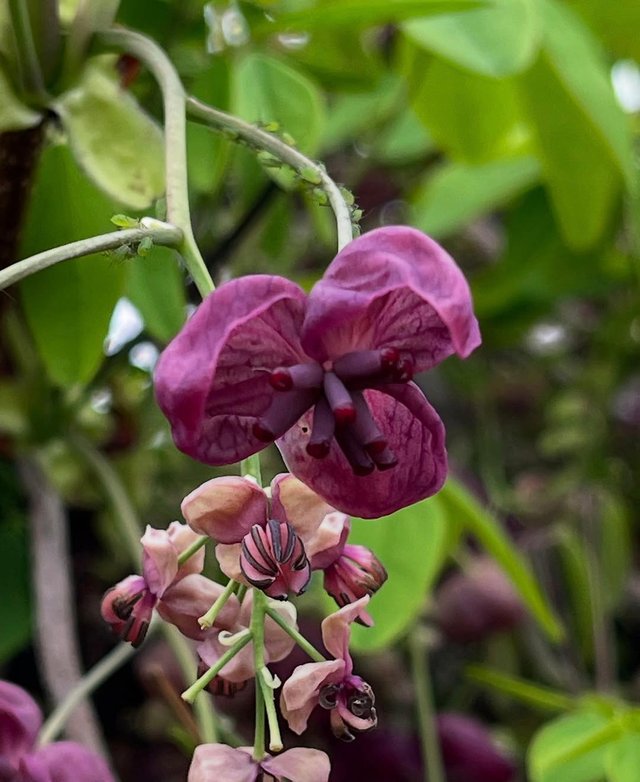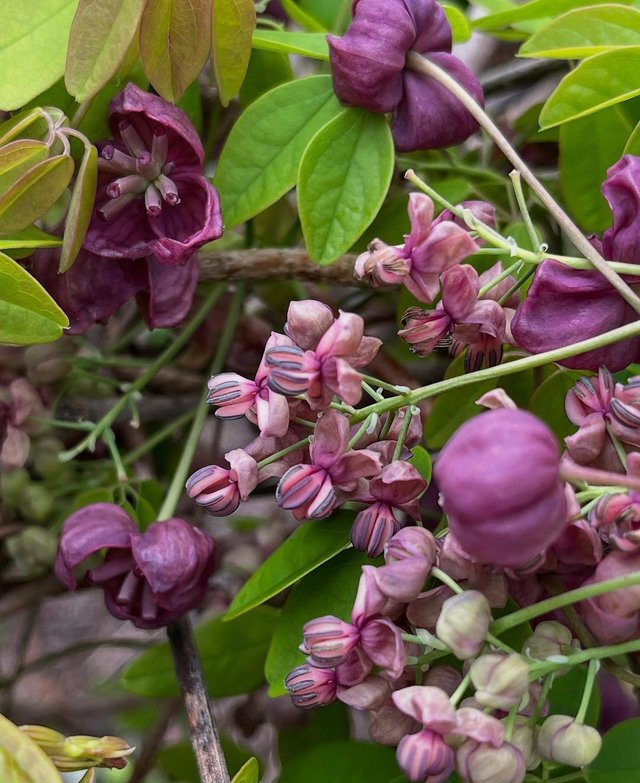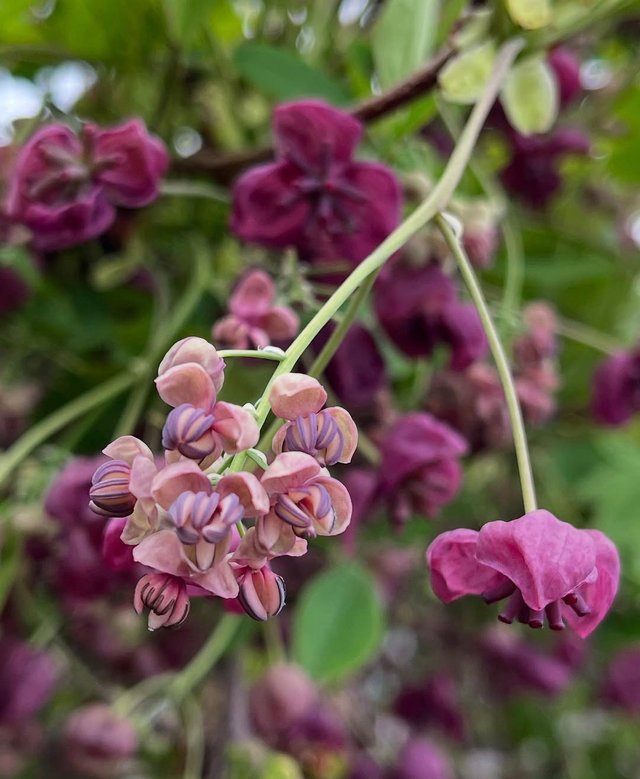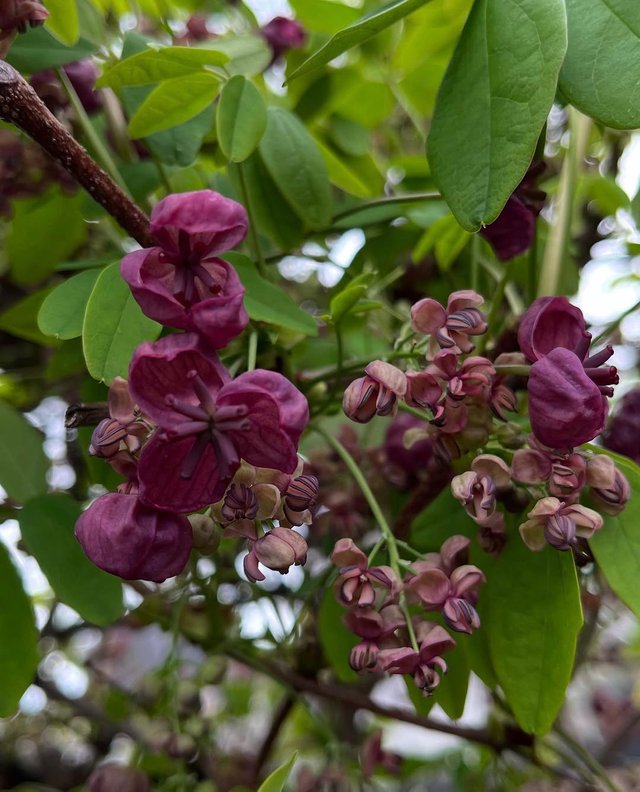Chocolate Vine Fruit




Winding its way through fences and trellises with graceful tendrils and lush, finger-like leaves, the chocolate vine, or Akebia quinata, is a fast-growing, ornamental climber known for its fragrant flowers and unique, edible fruit. While many grow this plant for its cascading purple blooms and vigorous greenery, few know that hidden among the foliage, come late summer to early autumn, lies one of nature’s most curious and delicious gifts: the chocolate vine fruit.Native to East Asia—particularly Japan, China, and Korea—Akebia quinata produces long, sausage-shaped fruits that mature in late summer or early fall. These pods are typically purplish-violet or greyish-lavender, around 4 to 10 inches long, and they split open naturally when fully ripe, revealing a center filled with a translucent, jelly-like pulp and shiny black seeds.
The striking contrast between the soft, glowing interior and the tough, leathery rind makes the fruit look almost otherworldly—like something from a fantasy garden.The edible part of the fruit is the gelatinous pulp, which has a lightly sweet flavor—often described as a mix between banana and melon, with a faint herbal or floral undertone. It’s soft, slippery, and slightly sticky, filled with small seeds that are often swallowed or spit out depending on preference.
The flavor is delicate rather than intense—more of a refreshing, mild sweetness than a bold tropical punch. It’s a fruit you enjoy slowly, savoring its subtle perfume and smooth texture.The rind, though not typically eaten raw due to its bitterness, can be stuffed and cooked in Japanese cuisine, often stir-fried with miso or meat to balance out its astringency.
In Japan, the fruit is known as “akebi”, and it has long held a place in regional food culture, especially in rural northern areas like Yamagata and Akita. There, the fruit is considered a seasonal delicacy, with both the pulp and rind finding their way into home-cooked dishes, herbal remedies, and even local sweets.Beyond its culinary appeal, the akebi fruit is celebrated in traditional haiku and folk stories as a symbol of late summer’s richness, hidden beauty, and fleeting joy—a perfect metaphor for nature’s quieter gifts.